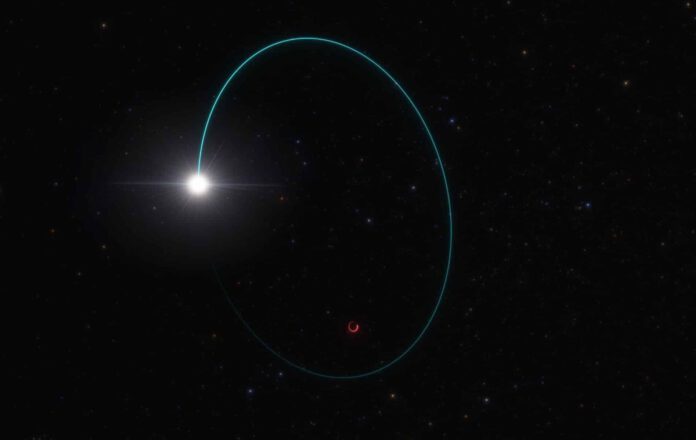
The Stellar Black Hole
At 33 times heavier than our sun and located merely 2000 light-years away in the constellation of Aquila, the stellar black hole not only stands as the heaviest stellar void discovered in our Milky Way to date but also is the second-closest black hole that we know of.
Astronomers’ Discovery
According to Astronomy & Astrophysics magazine, astronomers discovered this stellar black hole from data collected by the Gaia telescope. Designed to record the positions, distances, and motions of billions of stars with precision never achieved before, the telescope stumbled upon a star exhibiting an unexplained ‘wobble’. This hinted the star’s orbit was affected by an unseen companion, prompting the researchers to conclude that it must be a stellar black hole.
The Observations and Calculations
Subsequent observations of the star, conducted with the assistance of the Very Large Telescope in Chile, in combination with the Gaia data, enabled the researchers to calculate the mass of the stellar black hole accurately. The calculations unveiled that the stellar black hole is a staggering 33 times heavier than our sun, identifying it as the weightiest stellar black hole discovered in our Milky Way so far. The black hole is referred to as BH3.
The Heaviest and Closest
The discovery is remarkable for several reasons. The object’s mass is truly extraordinary; most stellar black holes in our Milky Way are on average ‘only’ 10 times heavier than our sun. Even Cygnus X-1 – the second-heaviest stellar black hole known to us – weighing in at ‘only’ 21 times that of the sun’s mass fails to come close to BH3.
Equally noteworthy is the proximity of the stellar black hole; it is just 2000 light-years away. “The fact that a black hole of this mass could have remained undetected in our vicinity was a surprise to everyone,” says Pasquale Panuzzo.
Meta-poor Stars
While BH3 might be fairly intriguing within our Milky Way, black holes of similar mass have been discovered before outside our galaxy. They are believed to form when stars containing few elements heavier than hydrogen and helium collapse. These so-called ‘metal-poor’ stars, due to losing less mass during their lifetime, retain more material at the end of their life and can therefore transform into a relatively heavy stellar black hole. While this may sound logical, until recently it was only a hypothesis that researchers struggled to prove. BH3 and its companion star are apparently changing that narrative.
Scientists point out that binary stars often share similar compositions, which implies that we can learn more about the star that transformed into the heaviest stellar hole in our Milky Way in its life’s end, as far as we know, by observing BH3’s companion. When we look at BH3’s companion with the Very Large Telescope once again, we indeed find that it is very metal-poor pointing out that the star that laid the foundation for BH3 must have also been metal-poor as expected.
Scientists’ Hope for the Future
The scientists hope to learn more about BH3 and its history in the future. For instance, they want to find out whether the black hole is actively attracting matter to itself using the instruments on the Very Large Telescope.











